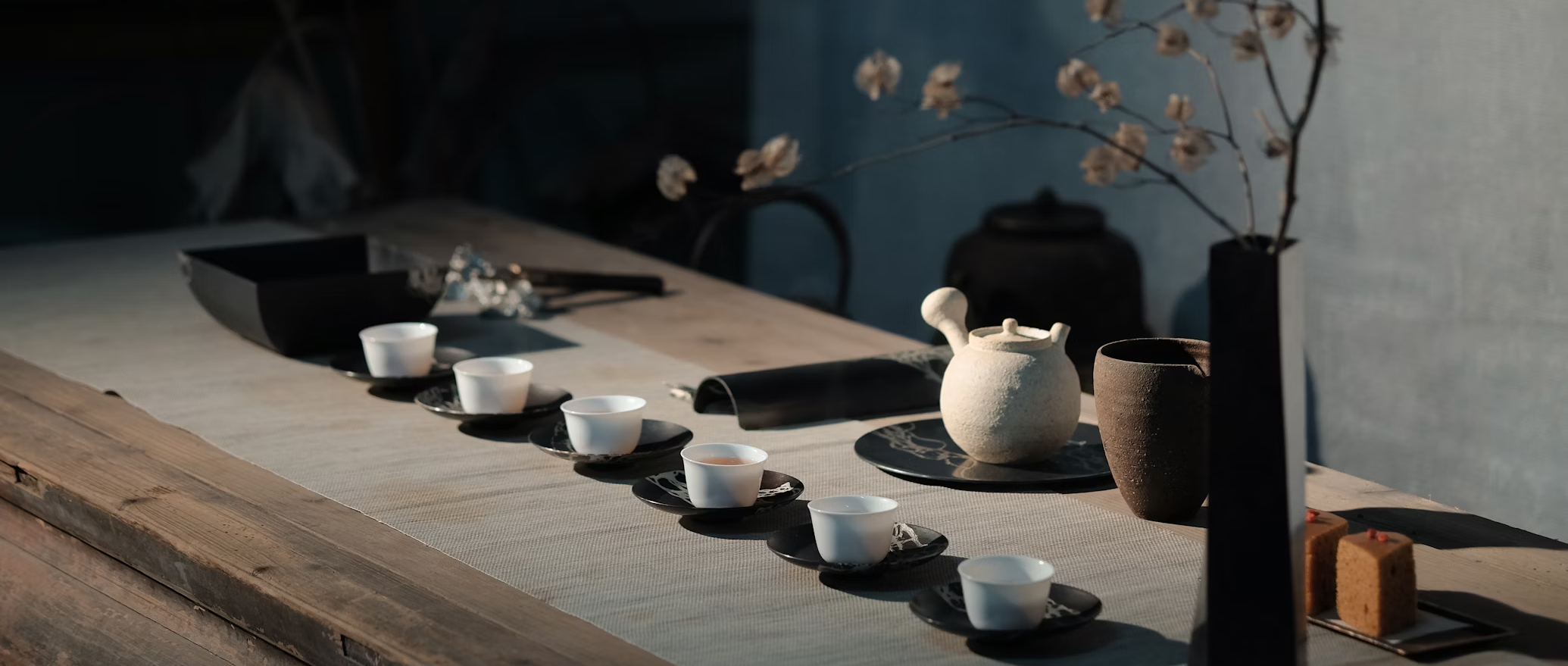
Green Tea remains a symbol of harmony and heritage in Japanese life, known as ‘ocha’ in Japan. It holds a special place in the country’s history, culture, and daily life. With a lineage stretching back over a millennium, green tea has evolved from a medicinal herb to a revered beverage synonymous with hospitality, mindfulness, and tradition. Let’s delve into the fascinating history and cultural significance of green tea in Japan.
Origins and Introduction:
Green tea, or “sencha,” traces its origins to China, but it gained popularity in Japan during the Heian period (794-1185 CE). Legend attributes the introduction of green tea to Japan to the Buddhist monk Eisai in the late 12th century. Eisai, who also founded the Rinzai school of Zen Buddhism, brought back tea seeds and the teachings of Zen from his travels to China, so he contributed significantly to both the tea culture and Zen Buddhism in Japan. He extolled the virtues of green tea for its medicinal properties and ability to promote mental clarity and spiritual awakening.
Tea Ceremony and Zen Buddhism – Green Tea: A Symbol of Harmony and Heritage in Japanese Life
During the Kamakura period (1185-1333), green tea gained popularity among the samurai class and the nobility as a symbol of refinement and elegance. Rikyu’s philosophy of “wabi-sabi,” which emphasizes simplicity, humility, and imperfection, became central to the tea ceremony, known as “chanoyu” or “sado.”
The tea ceremony is a ritualized practice that embodies the principles of harmony, respect, purity, and tranquility. Participants gather in a tearoom adorned with seasonal flowers and calligraphy scrolls, where they partake in the preparation and consumption of powdered green tea, or “matcha,” with utmost attention to detail and mindfulness. With grace and intention, people perform each gesture, from boiling the water to whisking the tea, creating a moment of profound connection and contemplation.

Cultivation and Production:
Japan’s diverse climate and fertile soil provide ideal conditions for tea cultivation, with the country’s tea-producing regions spanning from Kyushu in the south to Shizuoka in the east and Kyoto in the west. The most prized varieties of green tea, such as gyokuro and sencha, are grown in shaded fields, so they develop a unique flavor and aroma. After harvesting, the tea leaves are steamed, rolled, and dried to preserve their freshness and vibrant green color.
Varieties and Brewing Methods:
Green Tea: A Symbol of Harmony and Heritage in Japanese Life, Japanese green tea comes in a variety of styles and grades, each with its own distinct flavor profile and brewing method. In Japan, people commonly consume Sencha, which is characterized by its grassy aroma and refreshing taste. Gyokuro, referred to as the ‘jewel dew’ tea, is prized for its sweet, umami-rich flavor and delicate fragrance. Other popular varieties include matcha, a finely ground powdered tea used in the tea ceremony, and genmaicha, a blend of green tea and roasted brown rice.
Green tea can be brewed traditionally by steeping loose leaves in hot water or using tea bags or powdered tea. Water temperature, brewing time, and tea-to-water ratio all influence the final flavor and aroma.

Health Benefits and Wellness:
People celebrate green tea not only for its cultural significance but also for its numerous health benefits and wellness properties. Rich in antioxidants, vitamins, and catechins, people believe that green tea boosts metabolism, improves cardiovascular health, and enhances cognitive function.
Its known anti-inflammatory and anti-cancer properties make it a staple in both traditional Japanese medicine and modern wellness practices.

Modern Trends and Global Influence
In recent years, green tea has surged in popularity globally, symbolizing healthy living. Its health benefits and cultural significance have led to its incorporation into various culinary, skincare, and lifestyle trends. Cafes offer matcha lattes and green tea-infused desserts, while skincare enthusiasts seek its antioxidant-rich properties.

Green tea’s popularity has surged worldwide, with people valuing its health benefits and cultural significance. It features prominently in culinary creations, skincare products, and lifestyle trends. Cafes serve matcha lattes, and skincare enthusiasts seek its soothing properties. In Japan, it symbolizes hospitality and tradition, captivating imaginations with its ancient origins.
Sustainability and Ethical Practices – Green Tea: A Symbol of Harmony and Heritage in Japanese Life
As the demand for green tea grows, there is increasing attention to sustainability and ethical practices within the tea industry. Japanese tea producers are embracing organic and eco-friendly farming methods to minimize environmental impact and preserve biodiversity. Many tea farms are certified organic, and some adhere to biodynamic farming principles, which prioritize soil health and natural cycles.
Additionally, fair trade practices support local communities in the tea industry, promoting economic stability and social equity.
Companies sourcing tea directly from small-scale farmers empower rural communities economically by ensuring fair wages and resource access.
Cultural Significance in Everyday Life:
Green tea deeply infuses Japanese culture, from daily life to seasonal celebrations, symbolizing hospitality and warmth.
Across homes and workplaces, brewing and enjoying green tea offer moments of tranquility amid busy lives.
People offer it as a sign of respect to ancestors and share it among loved ones, fostering unity and community.
Influence on Art and Aesthetics:
Green Tea: A Symbol of Harmony and Heritage in Japanese Life inspires artists and craftsmen, shaping Japan’s aesthetic culture. The minimalist elegance of the tea ceremony influences various art forms like painting, ceramics, calligraphy, and flower arranging.
Master artisans treasure tea utensils for their craftsmanship. Serene tea gardens reflect Zen Buddhism’s principles and Japan’s reverence for nature.
Continued Evolution and Innovation:
While deeply rooted in tradition, green tea continues to evolve and innovate, because it responds to changing tastes and trends. Green tea creatively appears in modern culture through flavored teas, bottled drinks, and tea-inspired cocktails.
Green tea’s popularity drives cross-cultural exchange, with Japanese tea culture influencing global traditions. Enthusiasts from diverse backgrounds embrace its allure for health benefits, cultural significance, and ritualistic appeal.
In Japan, green tea symbolizes tradition, mindfulness, and community. Its rich history and enduring popularity reflect a deep connection between people, nature, and inner harmony. Whether in a tearoom or modern café, green tea enriches lives, and it inspires reverence for life’s simple pleasures.

